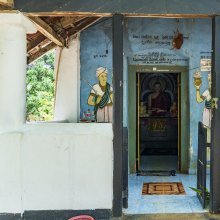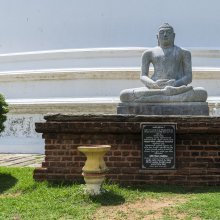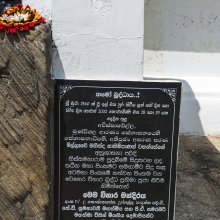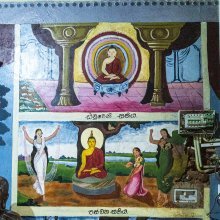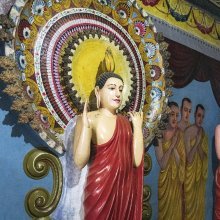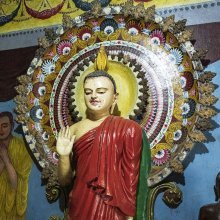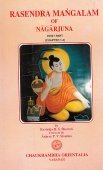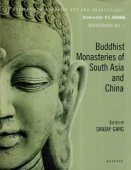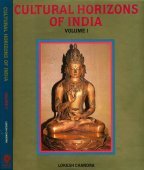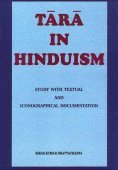Vihara, Vihāra, Vīhāra: 32 definitions
Introduction:
Vihara means something in Buddhism, Pali, Hinduism, Sanskrit, the history of ancient India, Jainism, Prakrit, Hindi. If you want to know the exact meaning, history, etymology or English translation of this term then check out the descriptions on this page. Add your comment or reference to a book if you want to contribute to this summary article.
Alternative spellings of this word include Vihar.
Images (photo gallery)
(+27 more images available)
In Hinduism
Vastushastra (architecture)
Source: Wisdom Library: Vāstu-śāstraVihāra (विहार) refers to a “temple”, and in a broader sense represents “devotional place” or “residence of God”. It is one of commonly used names for a temple, as found in Vāstuśāstra literature such the Mayamata and the Mānasāra.
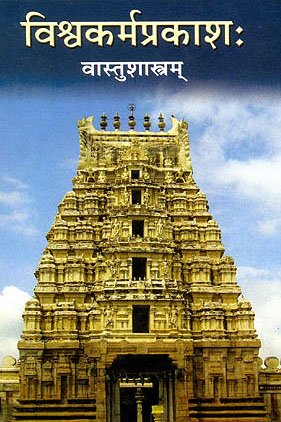
Vastushastra (वास्तुशास्त्र, vāstuśāstra) refers to the ancient Indian science (shastra) of architecture (vastu), dealing with topics such architecture, sculpture, town-building, fort building and various other constructions. Vastu also deals with the philosophy of the architectural relation with the cosmic universe.
Vyakarana (Sanskrit grammar)
Source: Wikisource: A dictionary of Sanskrit grammarVihāra (विहार).—Expansion of the position (स्थान (sthāna)) and the means of utterance (करण (karaṇa)) of a sound beyond the necessary extent, which produces a fault of pronunciation, called व्यास (vyāsa); cf. विहारसंहारयेर्व्यासपीडने । स्थानकरणयोर्विहारे विस्तारे व्यासो नाम दोषो जायते (vihārasaṃhārayervyāsapīḍane | sthānakaraṇayorvihāre vistāre vyāso nāma doṣo jāyate) Uvvaṭa on R. Pr. XIV 2.
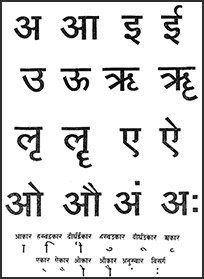
Vyakarana (व्याकरण, vyākaraṇa) refers to Sanskrit grammar and represents one of the six additional sciences (vedanga) to be studied along with the Vedas. Vyakarana concerns itself with the rules of Sanskrit grammar and linguistic analysis in order to establish the correct context of words and sentences.
Dharmashastra (religious law)
Source: Knowledge Traditions & Practices of India: Education: Systems & PracticesVihāra (विहार, “monastary”) forms part of the ancient Indian education system, which aimed at both the inner and the outer dimension of a person. Education in India started in the village itself in the home and in the temples. From there the aspiring student moved to gurukulas, centres of learning around great teachers and from there the aspiring scholar went to vihāras and universities.
During the Buddhist period, vihāras (monasteries) emerged as the chief centres of learning. Buddha encouraged the setting up of vihāras, for monks and nuns to meditate and the learned to pursue their quest. Gradually the vihāras grew into centres of education that attracted students from far and wide. The great Indian universities of Nalanda, Vikramasila and Valabhi may have evolved around vihāras and the initiative of creating these came entirely from the society.
Source: Sacred Texts: The Grihya Sutras, Part 2 (SBE30)Vihāra (विहार) refers to the “sacrificial ground” (where the yajña takes place), as mentioned in the Āpastamba-yajña-paribhāṣā-sūtras.—“All priestly performances take place on the northern side of the Vihāra. The priest should never turn away from the fire, i.e. should never turn his back on the altar. Nor from the Vihāra”.
Vihāra is explained as the sacrificial ground. Upacāra is explained as “adhvaryvādīnāṃ saṃcaraḥ”, and this saṃcara, according to Kātyāyana I, 3, 42, is the path between the Cātvāla and Utkara, the Utkara being on the west, the praṇītās on the east of the Vihāra. Kātyāyana I, 8, 26, expresses the same rule by “uttarata-upacāro yajñaḥ”, the Vihāra being the place where the Yajña takes place.

Dharmashastra (धर्मशास्त्र, dharmaśāstra) contains the instructions (shastra) regarding religious conduct of livelihood (dharma), ceremonies, jurisprudence (study of law) and more. It is categorized as smriti, an important and authoritative selection of books dealing with the Hindu lifestyle.
Pancaratra (worship of Nārāyaṇa)
Source: archive.org: Catalogue of Pancaratra Agama TextsVihāra (विहार) refers to an “excursion (to the forest)”, as discussed in chapter 24 of the Puruṣottamasaṃhitā: a Pāñcarātra text consisting of more than 1800 verses devoted to temple-building and the practical concerns of the Pāñcarātra priestly community.—Description of the chapter [brahmotsava-vidhi]: [...] Each day the procession will employ a different vāhana-vehicle. These are listed (67-79). For special observances within the brahmotsava period, other optional directions are given—[e.g., vana-vihāra-utsava (excursion to the forest) on the second day (104b-113)] [...] At the discretion of the Ācārya certain other celebrations may thus be added to the brahmotsava cycle (198-202).
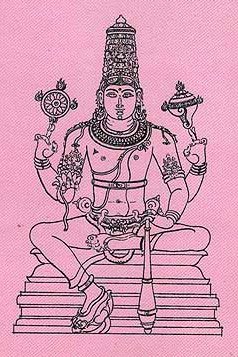
Pancaratra (पाञ्चरात्र, pāñcarātra) represents a tradition of Hinduism where Narayana is revered and worshipped. Closeley related to Vaishnavism, the Pancaratra literature includes various Agamas and tantras incorporating many Vaishnava philosophies.
Ayurveda (science of life)
Veterinary Medicine (The study and treatment of Animals)
Source: archive.org: The Elephant Lore of the HindusVihāra (विहार) refers to a “sporting elephant”, according to the 15th century Mātaṅgalīlā composed by Nīlakaṇṭha in 263 Sanskrit verses, dealing with elephantology in ancient India, focusing on the science of management and treatment of elephants.—[Cf. chapter 9, “on kinds of must”]: “12. With honey-colored nails, tusks, and eyes, skin like a dark cloud, red corners of the eyes, lotus-filament spots (on the skin), quarreling with other elephants, with sporting (vihāra) in dust and water the handsome elephant king becomes ‘temple-filled’ (in the first stage of must)”.
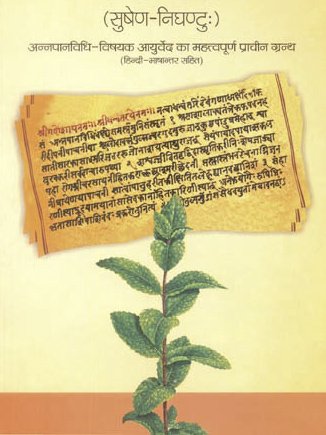
Āyurveda (आयुर्वेद, ayurveda) is a branch of Indian science dealing with medicine, herbalism, taxology, anatomy, surgery, alchemy and related topics. Traditional practice of Āyurveda in ancient India dates back to at least the first millenium BC. Literature is commonly written in Sanskrit using various poetic metres.
General definition (in Hinduism)
Source: WikiPedia: HinduismVihāra is the Sanskrit and Pali term for a Buddhist monastery. It originally meant “a secluded place in which to walk”, and referred to “dwellings” or “refuges” used by wandering monks during the rainy season. The northern Indian state of Bihar derives its name from the word “vihara”, due to the abundance of Buddhist monasteries in that area.
In the second century BCE a standard plan for a vihara was established. It could be either structural, which was more common in the south of India, or rock-cut like the chaitya-grihas of the Deccan. It consisted of a walled quadrangular court, flanked by small cells. The front wall was pierced by a door, the side facing it in later periods often incorporated a shrine for the image of the Buddha.
In Buddhism
Theravada (major branch of Buddhism)
Source: Dhamma Dana: Pali English GlossaryM Lodging, house (where bhikkhus live).
Usually, a vihara is constituted by a few lodgings, a sima, a great room where the laity can listen to some teachings, meditate, plan and accomplish some ceremonies, and sometimes with a kitchen and a dining room. A vihara can also appear into the shape of a small house or hut. In this case, we talk about a kuti.
vihara can possibly translate the word monastery.
Source: Pali Kanon: Manual of Buddhist Terms and DoctrinesVihāra ('abode'). There are 3 abodes:
- the heavenly abode (dibba-vihāra),
- the divine abode (brahma-vihāra, q.v.),
- the noble abode (ariya-vihāra).
See A.III.63; D.33.
Theravāda is a major branch of Buddhism having the the Pali canon (tipitaka) as their canonical literature, which includes the vinaya-pitaka (monastic rules), the sutta-pitaka (Buddhist sermons) and the abhidhamma-pitaka (philosophy and psychology).
Mahayana (major branch of Buddhism)
Source: Wisdom Library: Maha Prajnaparamita SastraVihāra (विहार) refers to three “dwellings” according to the 2nd century Mahāprajñāpāramitāśāstra chapter V.—There are three dwellings:
- divine abodes (divyavihāra),
- the abode of Brahma (brāhmavihāra),
- the abode of the saints (āryavihāra).
Of these three types of abodes, the Buddha chooses the āryavihāra. But here, out of compassion (anukampa) for beings (sattva), he abides in the city of Rājagṛha.
Source: De Gruyter: A Buddhist Ritual Manual on AgricultureVihāra (विहार) refers to a “monastery” (suitable for performing offering ceremonies), according to the Vajratuṇḍasamayakalparāja, an ancient Buddhist ritual manual on agriculture from the 5th-century (or earlier), containing various instructions for the Sangha to provide agriculture-related services to laypeople including rain-making, weather control and crop protection.—Accordingly [as the Bhagavān taught the detailed offering-manual], “At the time of drought one should prepare a maṇḍala with clay and cow dung measuring three hastas on a mountain, in a forest, at a monastery (vihāra), a spring, a pool, a tank, a well, a lake, or the residence of the Nāgas. One should dig a hole measuring a hasta in the middle of the maṇḍalaka. [...]”.
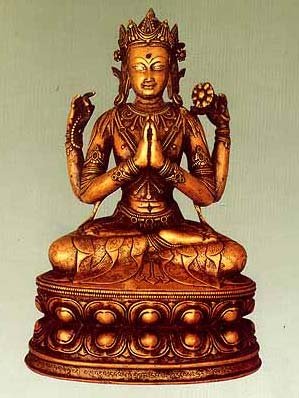
Mahayana (महायान, mahāyāna) is a major branch of Buddhism focusing on the path of a Bodhisattva (spiritual aspirants/ enlightened beings). Extant literature is vast and primarely composed in the Sanskrit language. There are many sūtras of which some of the earliest are the various Prajñāpāramitā sūtras.
Tibetan Buddhism (Vajrayana or tantric Buddhism)
Source: Brill: Śaivism and the Tantric Traditions (tantric Buddhism)Vihāra (विहार) refers to a “monastery”, according to Kuladatta’s Kriyāsaṃgrahapañjikā, a text within Tantric Buddhism representing a construction manual for monasteries.—Accordingly, [ācāryaparīkṣā in chapter 1]—“[...] In this case, a donor who wants to name a monastery (vihāra-ādika) and other [thing for religious purpose after himself] should, first of all, choose an [appropriate] officiant”.
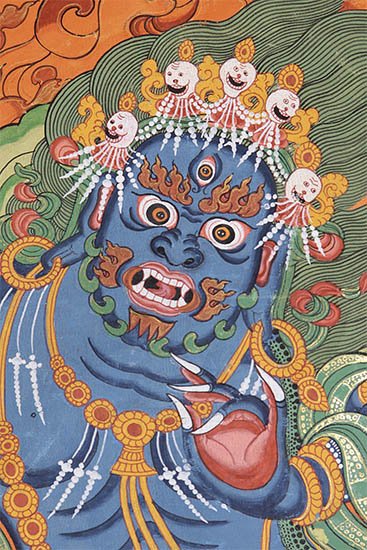
Tibetan Buddhism includes schools such as Nyingma, Kadampa, Kagyu and Gelug. Their primary canon of literature is divided in two broad categories: The Kangyur, which consists of Buddha’s words, and the Tengyur, which includes commentaries from various sources. Esotericism and tantra techniques (vajrayāna) are collected indepently.
General definition (in Buddhism)
Source: Amaravati: Glossarya residence; often used as the name for a small monastery.
India history and geography
Source: archive.org: Personal and geographical names in the Gupta inscriptionsVihāra (विहार) refers to a name-ending for place-names mentioned in the Gupta inscriptions (reigned from 3rd century CE). Vihāra literally means “a place of recreation or pleasure-ground”. With Buddhists or Jains it means a monastery or temple, originally a hall where the monks met or walked about. Afterwards, these halls were used as assembly halls or places of worship. The modern province of Bihar or Behar is so named on account of the large number of Buddhist monasteries in it.
Source: Shodhganga: Ajanta’s antiquityVihāra (विहार) is a general denotation for “rock cut architecture”. In the case of Ajantā, vihāra is used to denote everything else, which is bereft of a stūpa shrine. It means residential caves (upāśrayas) that must be without the Buddha shrines as well as those caves that are with the Buddha shrines.
Vihāras or monasteries, not necessarily of the rock-cut types existed right from the times of the Buddha. Buddhist texts refer to the erection of many vihāras. A merchant of Vaiśālī had presented a vihāra to the Buddha in Jetavana for varṣāvāsa, which was adorned beautifully and painted too. Buddhist texts mentions that for this vihāra, the Buddha himself had provided various specifications on the architectural and artistic details.
Source: Cologne Digital Sanskrit Dictionaries: Indian Epigraphical GlossaryVihāra.—(EI 22, 25; CII 3, 4; BL), a Buddhist or Jain monastery or temple or convent (EI 35). (HA), wandering of a Jain monk; also a Jain temple. Note: vihāra is defined in the “Indian epigraphical glossary” as it can be found on ancient inscriptions commonly written in Sanskrit, Prakrit or Dravidian languages.
Source: What is India: Inscriptions of the VākāṭakasVihāra (विहार) refers to a “temples” that were commonly build during the reign of the Vākāṭakas (mid-3rd century CE).—As shown elsewhere, the custom of building temples and vihāras in stone and brick was coming into vogue in the age of the Vākāṭakas, but these materials do not seem to have been generally used for constructing dwelling places for the rich or the poor. Ajaṇṭā painting show that palaces, houses as well as shops in market places were constructed of wood. As is well known, early Indian architecture was in wood. When vihāras and caityas came to be excavated in hills, many of the features of wooden architecture such as beams and rafters, unnecessary as they were in such excavations, were carved in stone. Wooden ribs can still be seen in some early caves such as the Caitya Cave at Kārlā.

The history of India traces the identification of countries, villages, towns and other regions of India, as well as mythology, zoology, royal dynasties, rulers, tribes, local festivities and traditions and regional languages. Ancient India enjoyed religious freedom and encourages the path of Dharma, a concept common to Buddhism, Hinduism, and Jainism.
Languages of India and abroad
Pali-English dictionary
Source: BuddhaSasana: Concise Pali-English Dictionaryvihāra : (m.) an abode; a dwelling place; mode of life; passing the time.
Source: Sutta: The Pali Text Society's Pali-English DictionaryVihāra, (fr. viharati) 1. (as m. & adj.) spending one’s time (sojourning or walking about), staying in a place, living; place of living, stay, abode (in general) VvA. 50 (jala°); PvA. 22, 79; eka° living by oneself S. II, 282 sq.; jaṅghā° wandering on foot PvA. 73; divā° passing the time of day Sn. 679; PvA. 142. See also below 3 a.—2. (applied meaning) state of life, condition, mode of life (in this meaning almost identical with that of vāsa2), e.g. ariya° best condition S. V, 326; SnA 136; dibba° supreme condition (of heart) Miln. 225; brahma° divine state S. V, 326; SnA 136; Vism. 295 sq. (ch. IX.); phāsu° comfort A. III, 119, 132; sukha° happiness S. III, 8; V, 326; A. I, 43; II, 23; III, 131 sq.; IV, 111 sq. 230 sq.; V, 10 sq. See further D. I, 145, 196; III, 220 (dibba, brahma, ariya), 250 (cha satata°), 281; S. II, 273 (jhāna°); III, 235 (id.); A. III, 294 (°ṃ kappeti to live one’s life); Ps. II, 20; Nett 119 sq. ‹-› 3. (a) a habitation for a Buddhist mendicant, an abode in the forest (arañña°), or a hut; a dwelling, habitation, lodging (for a bhikkhu), a single room Vin. II, 207 sq.; D. II, 7; A. III, 51, 299 (yathāvihāraṃ each to his apartment); Sn. 220 (dūra° a remote shelter for a bhikkhu), 391; Vism. 118 (different kinds; may be taken as c.).—(b) place for convention of the bhikkhus, meeting place; place for rest & recreation (in garden or park) DA. I, 133.—(c) (later) a larger building for housing bhikkhus, an organized monastery, a Vihāra Vin. I, 58; III, 47; S. I, 185 (°pāla the guard of the monastery); J. I, 126; Miln. 212; Vism. 292; DhA. I, 19 (°cārikā visit to the monastery), 49 (°pokkharaṇī), 416; Mhvs 19, 77; PvA. 12, 20, 54, 67, 141. 151; and passim. See also Dictionary of Names. The modern province Behar bears its name from the vihāras. (Page 642)
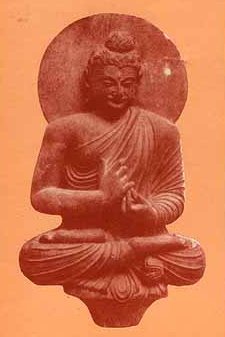
Pali is the language of the Tipiṭaka, which is the sacred canon of Theravāda Buddhism and contains much of the Buddha’s speech. Closeley related to Sanskrit, both languages are used interchangeably between religions.
Sanskrit dictionary
Source: DDSA: The practical Sanskrit-English dictionaryVihara (विहर).—
1) Taking away, removing.
2) Separation, disunion.
3) Changing.
4) Play, pastime; विहर उदीक्षया यदि परस्य विमुक्त ततः (vihara udīkṣayā yadi parasya vimukta tataḥ) Bhāgavata 1.87.29.
Derivable forms: viharaḥ (विहरः).
--- OR ---
Vihāra (विहार).—1 Removing, taking away.
2) Roaming or walking for pleasure, airing, a stroll, taking a walk.
3) Sport, play, pastime, recreation, diversion, pleasure; विहारशैलानुगतेव नार्गौः (vihāraśailānugateva nārgauḥ) R.16.26,67;5.41; 9.68;13.38;19.37.
4) Tread, stepping, movement (of hands, feet &c.); विकर्षणैः पाणिविहारहारिभिः (vikarṣaṇaiḥ pāṇivihārahāribhiḥ) Kirātārjunīya 4.15; दरमन्थरचरणविहारम् (daramantharacaraṇavihāram) Gītagovinda 11.
5) A park, garden; especially a pleasure-garden; आरामैश्च विहारैश्च शोभमानं समन्ततः (ārāmaiśca vihāraiśca śobhamānaṃ samantataḥ) Rām.7.7.13.
6) The shoulder.
7) A Jaina or Buddhist temple, convent, monastery.
8) A temple in general.
9) Great expansion of the organs of speech.
1) Opening, expansion.
11) The palace or banner of Indra.
12) A palace in general.
13) A kind of bird.
14) (Mīmāṃsā) The triad of fires, viz. गार्हपत्य, आहवनीय (gārhapatya, āhavanīya) and दक्षिण (dakṣiṇa); विहारे लौकिकानामर्थं साधयेत् (vihāre laukikānāmarthaṃ sādhayet) etc. MS.12.2.1; (vihāra iti gārhapatyādi ragnitretā ucyate viharaṇāt ŚB. on MS.12.2.1.).
15) Name of the country मगध (magadha) (modern Bihar).
16) The sacrificer's house (yajamānagṛha); Bhāgavata 4.5.14.
Derivable forms: vihāraḥ (विहारः).
--- OR ---
Vīhāra (वीहार).—
1) A Buddhist or Jaina convent.
2) A sanctuary.
Derivable forms: vīhāraḥ (वीहारः).
Source: Cologne Digital Sanskrit Dictionaries: Edgerton Buddhist Hybrid Sanskrit DictionaryVihāra (विहार).—m. (Pali id.), in [Buddhist Hybrid Sanskrit] chiefly in two mgs., both seemingly based on the meaning dwelling (to viharati, q.v.), (1) dwelling place of monks, especially of a monkish community, monastery; so used also in Sanskrit: in this sense = Tibetan gtsug lag khaṅ, house of sciences, because schools were associated with monasteries, Mahāvyutpatti 9096; 9152; (2) = Tibetan gnas (pa), as for viharati, state of being, stage or condition of existence; sukhasparśa-vihāra-tā Mahāvyutpatti 6288; brahma-vi°, q.v.; see s.v. viharati for examples; others praviṣṭamānasya śubhair vihārair Lalitavistara 7.2 (verse), probably being entered into (instr. = loc.) fair states; mayā pramatta- vihārāye na samanvāhṛtaṃ (so read with mss.) Mahāvastu iii.355.1, by me (a devatā), in a negligent state, it was not considered that…, proved by verse version of same incident, mamedaṃ na viditaṃ pramattāye 356.5; ayaṃ (sc. Maitreya's dwelling, Vairocanavyūhālaṃkāragarbha) śūnyatānimit- tāpraṇihita-vihāra-vihāriṇām āvāsaḥ Gaṇḍavyūha 469.25, and long list of similar formulae, all with cpds. ending -vihāra- vihāriṇāṃ, the abode of those who dwell in the state of…; yat Tathāgataḥ tribhir…apratisamair vihāraiḥ tadba- hula-vihārī, āryeṇa vihāreṇa, divyena, brāhmeṇa; iyam asya vihāraparamatety ucyate. tatra śūnyatānimittā- praṇihita-vihārā (compare Gaṇḍavyūha 469.25 above) nirodhasamāpatti- vihārāś cāryavihāra ity ucyate; catvāri dhyānāny ārupya- samāpattayaś ca divyo vihāra ity uc°; catvāry apramāṇāni (= brahmavihāra) brāhmo vi°…Bodhisattvabhūmi 90.7—13; twelve bodhisattva-vihāra, listed and explained at length in the ‘vihāra-chapter (paṭala)’ of Bodhisattvabhūmi, 317.5, 10 ff. (there is a 13th, the tāthāgato vi°, niruttaro vi°, 12—14), listed 15 ff., gotra-vi°, adhimukticaryā-vi°, pramudita-vi°, adhiśīla-vi°, etc. (the long chapter must be read to understand the terms which by themselves sound obscure); ten jñānapāramitā- vihāra, Gaṇḍavyūha 537.11 ff. (listed); in Bodhisattvabhūmi 332.20 ff. the standard 10 bodhisattva-bhūmi (q.v.) are called b°-vihārāḥ (line 23); compare Asaṅga (Mahāyāna-sūtrālaṃkāra) xx-xxi. 14 commentary, ekādaśa vihārā ekādaśa bhūmayaḥ (the 11th is the buddha-bhūmi); (3) probably walking (as in Sanskrit), in two almost identical passages in Divyāvadāna: padā vihāra 78.6 ff. and 467.2 ff., also in Mūla-Sarvāstivāda-Vinaya i.75.21 ff. (printed as [compound]), and iii.140.9, 19, walking, marching on foot (refers to passing around a holy place to the right, Divyāvadāna 78.5, 467.1); below, mālāvihāraḥ kṛtaḥ Divyāvadāna 78.25 and 467.26, and ff., and Mūla-Sarvāstivāda-Vinaya i.76.18 ff., a garland-perambulation (?), precise meaning not clear to me; it is obviously some form of homage to the holy spot, more elaborate than the depositing of loose flowers (mukta- puṣpāṇi Divyāvadāna 78.18; 467.18).
Source: Cologne Digital Sanskrit Dictionaries: Shabda-Sagara Sanskrit-English DictionaryVihara (विहर).—m.
(-raḥ) Separation, disunion, absence. E. vi before hṛ to convey, aff. ap .
--- OR ---
Vihāra (विहार).—m.
(-raḥ) 1. Walking for pleasure or amusement. 2. Wandering, roaming, going about. 3. A Baud'dha or Jaina convent. 4. A temple. 5. Taking away, removing. 6. Play, sport, pastime. 7. A pleasure-ground. 8. A palace. 9. The shoulder. 10. A sort of bird. E. vi before hṛ to take, aff. ghañ; also vīhāra .
--- OR ---
Vīhāra (वीहार).—m.
(-raḥ) A holy place, a temple, a sanctuary, but especially a Jaina or Baud'dha convent. E. vi, hṛ to convey, aff. ghañ .
Vīhāra can also be spelled as Vihāra (विहार).
Source: Cologne Digital Sanskrit Dictionaries: Benfey Sanskrit-English DictionaryVihara (विहर).—i. e. vi-hṛ + a, m. 1. Separation. 2. Absence. 3. Exchaging, Böhtl. Ind. Spr. 920.
--- OR ---
Vihāra (विहार).—i. e. vi-hṛ + a, m. 1. Wandering, going about, walking for pleasure, [Rāmāyaṇa] 3, 51, 20; [Vedāntasāra, (in my Chrestomathy.)] in
--- OR ---
Vīhāra (वीहार).—i. e. vi-hṛ + a (cf. vihāra), m. A Bauddha or Jaina convent, a sanctuary, a temple, a holy place.
Source: Cologne Digital Sanskrit Dictionaries: Cappeller Sanskrit-English DictionaryVihara (विहर).—[masculine] transposition, change.
--- OR ---
Vihāra (विहार).—[masculine] ([neuter]) distribution, arrangement, [especially] of the sacred fires, & these themselves; expansion, [especially] of the organs of speech; relaxation, recreation, amusement, sport, pastime, delight in (—°, also adj.); walking for pleasure, roaming about; place of recreation, pleasure-garden, grove; a Buddhist or Jaina temple or convent (also rikā [feminine]).
Source: Cologne Digital Sanskrit Dictionaries: Monier-Williams Sanskrit-English Dictionary1) Vihara (विहर):—[=vi-hara] a etc. See vi-√hṛ, [column]2.
2) [=vi-hara] [from vi-hṛ] b m. taking away, removing, shifting, changing, [Bhartṛhari]
3) [v.s. ...] separation, disunion, absence, [Horace H. Wilson]
4) Vihāra (विहार):—[=vi-hāra] [from vi-hṛ] m. (once in [Bhāgavata-purāṇa] n.) distribution, transposition (of words), [Aitareya-brāhmaṇa; Lāṭyāyana]
5) [v.s. ...] arrangement or disposition (of the 3 sacred fires; also applied to the fires themselves or the space between them), [???]
6) [v.s. ...] too great expansion of the organs of speech (consisting in too great lengthening or drawling in pronunciation, opp. to saṃ-hāra q.v.), [Ṛgveda-prātiśākhya]
7) [v.s. ...] walking for pleasure or amusement, wandering, roaming, [Mahābhārata; Kāvya literature] etc.
8) [v.s. ...] sport, play, pastime, diversion, enjoyment, pleasure (‘in’ or ‘with’ [compound]; ifc. also = taking delight in), [Yājñavalkya; Mahābhārata; Rāmāyaṇa] etc.
9) [v.s. ...] a place of recreation, pleasure-ground, [Mahābhārata; Kāvya literature] etc.
10) [v.s. ...] (with Buddhists or Jainas) a monastery or temple (originally a hall where the monks met or walked about; afterwards these halls were used as temples), [Lalita-vistara; Mṛcchakaṭikā; Kathāsaritsāgara] etc. (cf. [Monier-Williams’ Buddhism 68; 81 etc.])
11) [v.s. ...] consecration for a sacrifice, [Āpastamba]
12) [v.s. ...] Name of the country of Magadha (called Bihār or Behār from the number of Buddhist monasteries See, [Monier-Williams’ Buddhism 68]), [Catalogue(s)]
13) [v.s. ...] the shoulder, [cf. Lexicographers, esp. such as amarasiṃha, halāyudha, hemacandra, etc.]
14) [v.s. ...] a [particular] bird (= bindurekaka), [cf. Lexicographers, esp. such as amarasiṃha, halāyudha, hemacandra, etc.]
15) [v.s. ...] = vaijayanta, [cf. Lexicographers, esp. such as amarasiṃha, halāyudha, hemacandra, etc.]
16) Vīhāra (वीहार):—[=vī-hāra] m. = vi-h, a temple, sanctuary, ([especially]) a Jaina or Buddhist convent or temple, [Horace H. Wilson]
Source: Cologne Digital Sanskrit Dictionaries: Yates Sanskrit-English Dictionary1) Vihara (विहर):—[vi-hara] (raḥ) 1. m. Separation, absence.
2) Vihāra (विहार):—[vi-hāra] (raḥ) 1. m. Walking for pleasure or amusement; theatre; Jaina temple; sport; shoulder; sort of bird.
3) Vīhāra (वीहार):—(raḥ) 1. m. A holy place, temple.
Source: DDSA: Paia-sadda-mahannavo; a comprehensive Prakrit Hindi dictionary (S)Vihāra (विहार) in the Sanskrit language is related to the Prakrit word: Vihāra.
[Sanskrit to German]
Sanskrit, also spelled संस्कृतम् (saṃskṛtam), is an ancient language of India commonly seen as the grandmother of the Indo-European language family (even English!). Closely allied with Prakrit and Pali, Sanskrit is more exhaustive in both grammar and terms and has the most extensive collection of literature in the world, greatly surpassing its sister-languages Greek and Latin.
Hindi dictionary
Source: DDSA: A practical Hindi-English dictionaryVihāra (विहार) [Also spelled vihar]:—(nm) merry-making, having good time, pastime; wandering, roaming; sexual enjoyment; a (Buddhistic) monastery; -[gṛha] a pleasure-house; -[sthala/sthalī] a pleasure-resort; hence [vihārī] (a and (nm); [vihāriṇī] (a and nf).
...
Prakrit-English dictionary
Source: DDSA: Paia-sadda-mahannavo; a comprehensive Prakrit Hindi dictionary1) Vihara (विहर) in the Prakrit language is related to the Sanskrit word: Vihṛ.
2) Vihara (विहर) also relates to the Sanskrit word: Pratīkṣ.
3) Vihāra (विहार) also relates to the Sanskrit word: Vidhāra.
4) Vihāra (विहार) also relates to the Sanskrit word: Vihāra.
Prakrit is an ancient language closely associated with both Pali and Sanskrit. Jain literature is often composed in this language or sub-dialects, such as the Agamas and their commentaries which are written in Ardhamagadhi and Maharashtri Prakrit. The earliest extant texts can be dated to as early as the 4th century BCE although core portions might be older.
Kannada-English dictionary
Source: Alar: Kannada-English corpusVihāra (ವಿಹಾರ):—
1) [noun] the act of walking, strolling liesurly.
2) [noun] a building or residence for Buddhist or Jaina monks.
3) [noun] the residence of a king; a palace.
4) [noun] (jain.) a touring for the purpose of spreading Jaina Dharma.
Kannada is a Dravidian language (as opposed to the Indo-European language family) mainly spoken in the southwestern region of India.
Nepali dictionary
Source: unoes: Nepali-English DictionaryVihāra (विहार):—n. 1. roaming or walking for pleasure; 2. sport; play; pastime; 3. Buddhist temple; convert; monastery; 4. temple;
Nepali is the primary language of the Nepalese people counting almost 20 million native speakers. The country of Nepal is situated in the Himalaya mountain range to the north of India.
See also (Relevant definitions)
Partial matches: De, Hara, Vi, Vihara, Te.
Starts with (+12): Vihara Sutta, Viharabhadra, Viharabhumi, Viharabija, Viharadananaumodana Sutta, Viharadasi, Viharadesha, Viharadevi, Viharagala, Viharagriha, Viharajira, Viharaka, Viharakaraka, Viharakarika, Viharakridamriga, Viharamana, Viharamana-Jina, Viharana, Viharanakala, Viharanakrama.
Query error!
Full-text (+1429): Brahmavihara, Rajavihara, Parivihara, Nirvihara, Nishavihara, Dibbavihara, Viharayatra, Viharadasi, Viharashaila, Mahavihara, Viharashayana, Viharadesha, Varivihara, Viharavari, Viharabhumi, Janghavihara, Buddhavihara, Viharavapi, Viharagriha, Bhadravihara.
Relevant text
Search found 196 books and stories containing Vihara, De vihara, Vi-hara, Vi-hāra, Vī-hāra, Vihāra, Vīhāra, Vihara's, Viharan, Viharas; (plurals include: Viharas, De viharas, haras, hāras, Vihāras, Vīhāras, Vihara'ses, Viharans, Viharases). You can also click to the full overview containing English textual excerpts. Below are direct links for the most relevant articles:
Dipavamsa (study) (by Sibani Barman)
Hari-bhakti-kalpa-latikā (by Sarasvati Thkura)
Garga Samhita (English) (by Danavir Goswami)
Verse 2.19.37 < [Chapter 19 - The Rāsa-dance Pastime]
Verse 2.20.25 < [Chapter 20 - The Rāsa-dance Pastime]
Verse 2.20.28 < [Chapter 20 - The Rāsa-dance Pastime]
Formal Education System in Ancient India (by Sushmita Nath)
The 7th century Valabhī university < [Chapter 3 - Centres of Learning in Vedic and Buddhist Period]
The Buddhist Vihāra or Monastery < [Chapter 3 - Centres of Learning in Vedic and Buddhist Period]
The Jagaddala university < [Chapter 3 - Centres of Learning in Vedic and Buddhist Period]
Vinaya (3): The Cullavagga (by T. W. Rhys Davids)
Cullavagga, Khandaka 6, Chapter 17 < [Khandaka 6 - On Dwellings and Furniture]
Cullavagga, Khandaka 6, Chapter 11 < [Khandaka 6 - On Dwellings and Furniture]
Cullavagga, Khandaka 6, Chapter 3 < [Khandaka 6 - On Dwellings and Furniture]
Amaravati Art in the Context of Andhra Archaeology (by Sreyashi Ray chowdhuri)
Lower Kṛṣṇā Valley (18): Bavikoṇḍa < [Chapter 2 - Amarāvatī and other Archaeological Sites of Ancient Andhra Pradesh]
Lower Kṛṣṇā Valley (25): Pavurallakoṇḍa (Pavuralla Bodu) < [Chapter 2 - Amarāvatī and other Archaeological Sites of Ancient Andhra Pradesh]
Lower Kṛṣṇā Valley (8): Nāgārjunakoṇḍa < [Chapter 2 - Amarāvatī and other Archaeological Sites of Ancient Andhra Pradesh]
Related products
